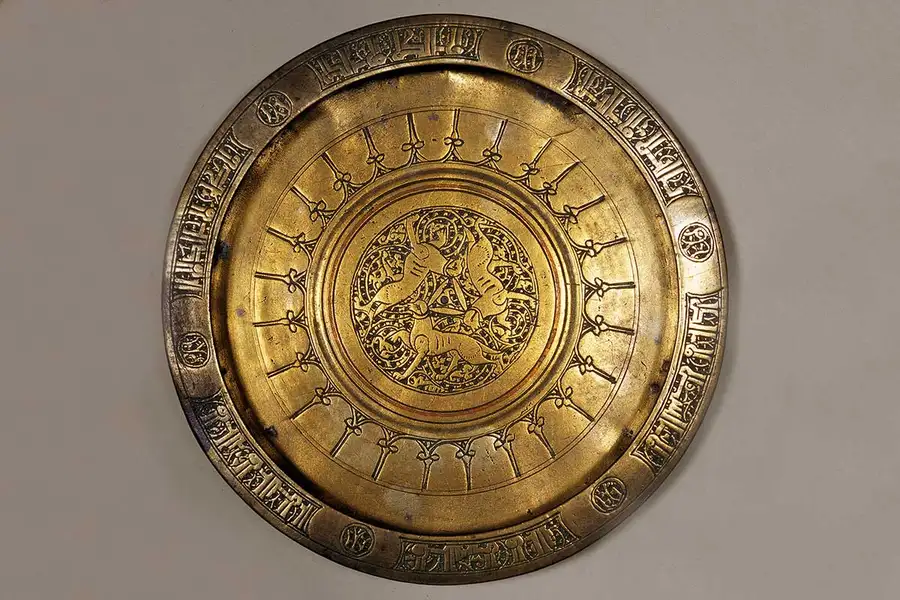Rabbits have captured the human imagination for centuries, appearing in dreams, literature, and art with rich and varied symbolism. These small, unassuming creatures represent a wide array of themes, from fertility and abundance to innocence, cunning, and vulnerability. This article delves into the multifaceted symbolism of rabbits, exploring their significance in dreams, literature, and art, and uncovering the deeper meanings they convey.
Rabbits in Dreams
In dreams, rabbits often carry potent symbolism, reflecting aspects of the dreamer’s subconscious mind. The interpretation of a rabbit in a dream can vary based on the context in which it appears, but several common themes emerge.
Fertility and Abundance
Rabbits are widely known for their prolific breeding, making them a symbol of fertility and abundance. Dreaming of a rabbit can signify growth, prosperity, and the potential for new beginnings. This interpretation aligns with the rabbit’s natural reproductive capabilities and its association with springtime and renewal.
Innocence and Vulnerability
The role of rabbits as prey animals is another significant aspect of their symbolism. This perspective emphasizes their vulnerability and the constant threat of danger they face in the wild. Rabbits are also seen as gentle and timid creatures, embodying innocence and vulnerability. A rabbit in a dream might represent the dreamer’s own sense of fragility or a desire to return to a simpler, more innocent state of being. It can also highlight feelings of being overwhelmed or threatened, urging the dreamer to seek protection or refuge.
Quickness and Agility
The agility and speed of rabbits are notable traits, often symbolizing quick thinking and adaptability. In dreams, a rabbit might suggest that the dreamer needs to act swiftly or think on their feet in a particular situation. It can also represent an ability to navigate through challenges with grace and agility.
Rabbits in Literature
Throughout literary history, rabbits have been used to convey a wide range of themes and messages, often serving as central characters or significant symbols in various narratives.
Children’s Literature
In children’s literature, rabbits often symbolize innocence, curiosity, and the journey of growing up. Characters like Beatrix Potter’s Peter Rabbit and Lewis Carroll’s White Rabbit in “Alice’s Adventures in Wonderland” are iconic examples. Peter Rabbit’s adventures and misadventures in Mr. McGregor’s garden embody themes of curiosity, mischief, and the consequences of disobedience. Meanwhile, the White Rabbit’s role as Alice’s guide into Wonderland represents the start of a journey into the unknown, full of wonder and challenges.
In literature, rabbits as tricksters can be found in stories like “Br’er Rabbit” from African-American folklore. These tales showcase the rabbit’s ability to use cunning and clever tactics to escape danger and turn the tables on its opponents. Such narratives highlight the theme of the underdog prevailing through wit and ingenuity. One of our family’s favorite children’s stories, “Good Job Oliver!” doubles down on this theme by having the smallest of rabbits succeed when competing with other larger more robust rabbits through his creativity and clever thinking.
Symbolism in Classic Literature
In classic literature, rabbits can also serve as metaphors for deeper philosophical or societal themes. In Richard Adams’ “Watership Down,” rabbits are anthropomorphized to explore themes of survival, leadership, and community. The story delves into the complexities of social structures, the struggle for freedom, and the resilience of the underdog, all through the lens of a group of rabbits on a quest for a new home.
Rabbits in Art
Throughout history, rabbits have been depicted in various forms of art, each carrying distinct cultural and symbolic meanings. From ancient mythology to contemporary works, the representation of rabbits in art is rich and varied.
Mythological and Religious Symbolism
In many cultures, rabbits are imbued with mythological significance. For instance, in Chinese mythology, the Moon Rabbit is a companion to the Moon Goddess, symbolizing longevity and immortality.
In Native American folklore, the rabbit often appears as a trickster figure, using cleverness and deceit to achieve its goals. These stories emphasize the rabbit’s ability to navigate complex situations, reflecting the idea that intelligence and strategy can triumph over brute strength.
Depictions as Prey
In art, the depiction of rabbits as prey can evoke empathy and highlight themes of innocence and the fragility of life. Artists may use this symbolism to comment on broader societal issues, such as the innocence of victims or the cruelty of predators.
Renaissance and European Art
During the Renaissance, European art frequently depicted rabbits, often symbolizing purity and innocence. Artists like Albrecht Dürer and Titian included rabbits in their works to convey themes of gentleness and peacefulness. In religious art, rabbits sometimes appear at the feet of the Virgin Mary, reinforcing their association with purity and divine grace.
Modern and Contemporary Art
In modern and contemporary art, rabbits continue to be a source of inspiration, symbolizing a range of concepts from playfulness to existential reflection. For example, the artist Jeff Koons created a series of stainless steel sculptures featuring rabbits, exploring themes of consumerism and cultural perception. Similarly, contemporary painters might use rabbits to evoke a sense of whimsy or to comment on societal issues.
The Three Rabbits Symbol: An Ancient and Mysterious Motif
The Three Rabbits/Hares symbol is a fascinating and enigmatic motif that has appeared in various cultures and locations throughout history. This symbol typically features three hares or rabbits chasing each other in a circular formation, with each hare sharing an ear with the others, creating a unique and continuous loop. Despite its wide geographical distribution and long history, the exact origin and meaning of the Three Hares symbol remain subjects of curiosity and debate.
Historical and Geographical Distribution
The Three Rabbits symbol has been discovered in a variety of contexts across the world, including in:
- Medieval Churches in England and Europe: The symbol appears in several churches, particularly in Devon, England, where it is often found on roof bosses.
- Buddhist Caves in China: Some of the earliest known examples of the symbol are found in the Mogao Caves, also known as the Caves of the Thousand Buddhas, in Dunhuang, China, dating back to the 6th century.
- Islamic Art: The motif appears in Islamic metalwork and ceramics, indicating its spread along trade routes.
- Synagogues in Europe: The symbol has been found in Jewish religious contexts, showing its adoption and adaptation by different cultures and religions.
Possible Meanings and Interpretations
The precise meaning of the Three Rabbits symbol is unclear, but several theories have been proposed based on its context and usage:
- Cycle of Life and Rebirth: The continuous loop created by the three hares sharing ears could symbolize the cyclical nature of life, death, and rebirth. This interpretation aligns with the symbol’s use in various religious and spiritual contexts.
- Fertility and Abundance: Given the rabbit’s association with fertility, the Three Rabbits motif may represent abundance and the renewal of life, which is a common theme in many cultures.
- Trinity and Unity: In Christian contexts, the three rabbits may symbolize the Holy Trinity or the concept of unity and interdependence among three distinct entities. This interpretation is supported by the symbol’s presence in medieval churches.
- Trade and Cultural Exchange: The widespread occurrence of the Three Rabbits symbol along trade routes suggests it might have served as a mark of cultural exchange, reflecting the interconnectedness of different civilizations through commerce and shared artistic motifs.
- Mystical and Protective Qualities: Some scholars propose that the symbol might have held mystical or protective significance, warding off evil or bringing good fortune to those who used it.
Artistic and Cultural Significance
The Rabbits symbol is a remarkable example of a motif that transcends cultural and religious boundaries. Its presence in such diverse contexts underscores the universal appeal and adaptability of symbolic art. The motif’s intricate design and visual appeal have made it a subject of fascination for historians, artists, and scholars alike.
In contemporary times, the Three Rabbits symbol continues to inspire artists and designers, who incorporate it into modern artworks, jewelry, and decorative items. Its enduring mystery and beauty make it a powerful symbol that resonates with people across different cultures and eras.
Conclusion
The rabbit as a symbol in dreams, literature and art is a testament to its enduring cultural significance and the rich tapestry of meanings it embodies. Whether representing fertility, innocence, agility, trickery, or vulnerability, the rabbit remains a versatile and potent symbol. By examining the various interpretations of rabbits in dreams and art, we gain insight into this beloved creature’s complex and multifaceted nature, reflecting both our cultural heritage and individual subconscious minds.

